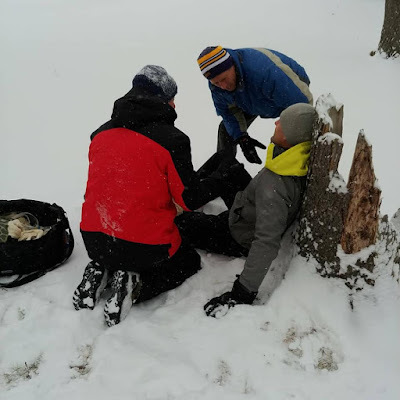 |
| Letchworth Middle Falls Photo Credit: Keith Walters Photography |
Letchworth State Park is commonly referred to as the “Grand Canyon of the East.” The park is more than 14,000 acres and is bisected by a 22 mile long segment of the Genesee River. The river is at the base of the canyon that is over 550 feet deep in some sections. This unique topography offers visitors spectacular vistas and several waterfalls.
 |
| "The Grand Canyon of the East" Photo Credit: Mike Radomski |
The river gorge cuts through the valley allowing the Genesee River to roar over three major waterfalls and several whitewater rapids. The Seneca Indians called the area Sehgahunda, meaning the “Vale of Three Falls”. The Upper, Middle and Lower Falls are by far the most popular and most photographed waterfalls in the park.
The sheer cliffs of the gorge and size of the Genesee River watershed gives way to the more than 30 additional waterfalls throughout the park. Many of the waterfalls are created by creeks flowing over the gorge walls with some of these cascade over 300 feet high. However, many are considered ephemeral (only exist after a rainfall) or seasonal.
 |
| The Letchworth Middle Falls Photo Credit: Keith Walters Photography |
Deh-ga-ya-soh Falls, located between the Middle Falls and Inspiration Point, is the most dependable of these “minor, ephemeral" falls. Deh-ga-ya-soh Falls is a complex ribbon falls that cascades over 150 ft. Deh-ga-ya-soh Falls in the Seneca language means “Nameless Spirits”.
 |
| Inspiration Falls Photo Credit: Keith Walters Photography |
Located nearby Deh-ga-ya-soh Falls, is the 350 ft. tall Inspiration Falls. Although Inspiration Falls only flows during periods of heavy rain or snow melt off, it becomes NYS’s tallest waterfall.
Another dependable waterfall is located at Wolf Creek. The Wolf Creek Falls is a long cascade made up of 4 waterfalls plunging 225 feet. Three of the waterfalls can been seen from the upper trail, but the final and most spectacular cascade can only be seen from the river.
 |
| Shower Curtain Falls (final drop as Wolf Creek enters the Genesee River). Photo Credit: Mike Radomski |
Adventure Calls Outfitter’s rafting trips hike up to the final cascade when conditions permit. At the base of the falls, is “the leap of faith”, a 6-7 foot deep hole inside the fall’s grotto where guests leap through the waterfall into the pool that is often above their heads.
NYS is blessed with many spectacular waterfalls from Niagara Falls to Taughannock Falls to Kaaterskill Falls, over 3200 have been documented. The abundance of waterfalls has created opportunities for people to document them. There are a several great websites and books that document the falls. DigTheFalls is the best place to start. They have an interactive map of the known NYS falls. DigTheFalls also sponsors the NYS Waterfalls Challenge.
One of the best resources for Letchworth State Park Falls is FalzGuy.com. Much of his work is referenced in this article as well as the previously mention websites. FalzGuy.com has a wealth of the information on Letchworth State Park waterfalls. He has documented GPS locations, best places to view each falls, maps and descriptions. I have summarized his waterfalls listings in the table below. FalzGuy.com also offers book called A Waterfall Guide To Letchworth State Park.
If you are into maps like I am, you can create your own custom Letchworth State Park waterfall map using this custom Caltopo map I created for this article. You can import the GPX file of the Letchworth Falls into your GPS device and create your own custom adventure. Maps of the park can be found at NYS Parks online.
Although you can see most of Letchworth’s “minor” falls from trails in the park, one of the best ways to see the Three Sisters Falls and Wolf Creek Falls is from the gorge on whitewater rafting trips with Adventure Calls Outfitters.
 |
| Adventure Calls Rafting Trip Photo Credit: Mike Radomski |
A special thanks to Keith Walters Photography.
Keith provided amazing photos for this article. He is extremely talented and has captured many spectacular photos of Letchworth State Park and other landscapes. All are available for print on his website. You can follow his work at:
- Website: http://www.keithwaltersphotography.com
- Instagram: @kwphot0
- Facebook: /KeithWaltersPhotography



















